Top Rankings
Brookland School District ranks among the top 20% of public school district in Arkansas for:
Category
Attribute
Graduation Rate
Highest graduation rate (Top 20%)
Community Size
Largest student body (number of students) (Top 1%)
For the 2025 school year, there is 1 public middle school serving 706 students in Brookland School District. This district's average middle testing ranking is 8/10, which is in the top 30% of public middle schools in Arkansas.
ÎŰÎŰÂţ» Middle School in Brookland School District have an average math proficiency score of 37% (versus the Arkansas public middle school average of 36%), and reading proficiency score of 48% (versus the 42% statewide average).
Minority enrollment is 12% of the student body (majority Hispanic), which is less than the Arkansas public middle school average of 41% (majority Black).
Overview
This School District
This State (AR)
# Schools
5 Schools
352 Schools
# Students
3,149 Students
147,541 Students
# Teachers
201 Teachers
13,335 Teachers
Student : Teacher Ratio
16:1
16:1
District Rank
Brookland School District, which is ranked within the top 30% of all 258 school districts in Arkansas (based off of combined math and reading proficiency testing data) for the 2021-2022 school year.
The school district's graduation rate of 90-94% has stayed relatively flat over five school years.
Overall District Rank
#60 out of 259 school districts
(Top 30%)
(Top 30%)
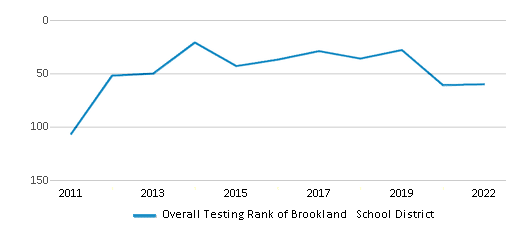
Math Test Scores (% Proficient)
45%
38%

Reading/Language Arts Test Scores (% Proficient)
45%
40%
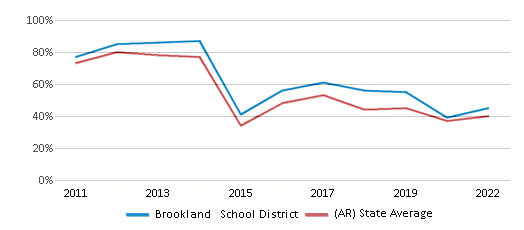
Science Test Scores (% Proficient)
41%
36%
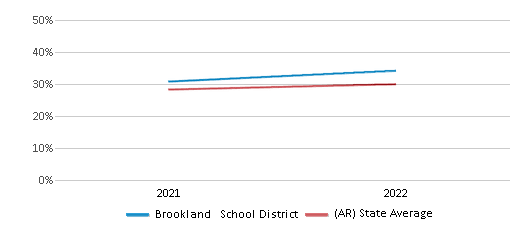
Graduation Rate
90-94%
88%
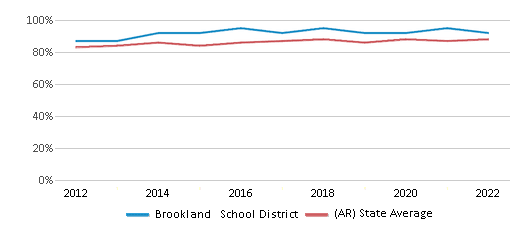
Students by Ethnicity:
Diversity Score
0.23
0.60
# American Indian Students
1 Student
846 Students
% American Indian Students
n/a
1%
# Asian Students
12 Students
2,865 Students
% Asian Students
n/a
2%
# Hispanic Students
182 Students
21,477 Students
% Hispanic Students
6%
14%
# Black Students
113 Students
28,045 Students
% Black Students
4%
19%
# White Students
2,751 Students
87,000 Students
% White Students
87%
59%
# Hawaiian Students
n/a
1,533 Students
% Hawaiian Students
n/a
1%
# Two or more races Students
90 Students
5,775 Students
% of Two or more races Students
3%
4%
Students by Grade:
# Students in PK Grade:
155
20
# Students in K Grade:
220
725
# Students in 1st Grade:
249
806
# Students in 2nd Grade:
240
836
# Students in 3rd Grade:
251
826
# Students in 4th Grade:
230
1,120
# Students in 5th Grade:
244
4,995
# Students in 6th Grade:
224
20,844
# Students in 7th Grade:
219
36,641
# Students in 8th Grade:
253
37,270
# Students in 9th Grade:
234
18,603
# Students in 10th Grade:
241
8,958
# Students in 11th Grade:
193
8,347
# Students in 12th Grade:
195
7,514
# Ungraded Students:
1
36
District Revenue and Spending
The revenue/student of $9,585 in this school district is less than the state median of $13,132. The school district revenue/student has declined by 7% over four school years.
The school district's spending/student of $8,535 is less than the state median of $13,043. The school district spending/student has declined by 7% over four school years.
Total Revenue
$30 MM
$6,371 MM
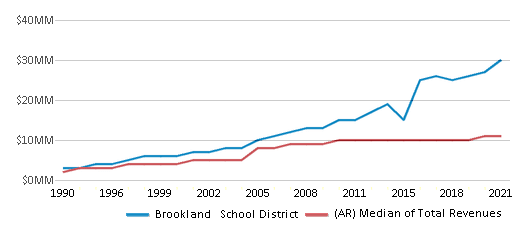
Spending
$27 MM
$6,327 MM
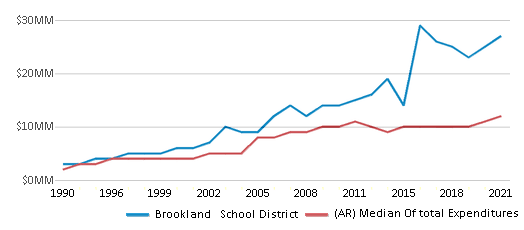
Revenue / Student
$9,585
$13,132
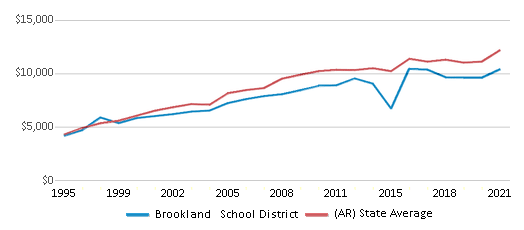
Spending / Student
$8,535
$13,043

Best Brookland School District ÎŰÎŰÂţ» Middle Schools (2025)
School
(Math and Reading Proficiency)
(Math and Reading Proficiency)
Location
Grades
Students
Rank: #11.
Brookland Junior High School
(Math: 37% | Reading: 48%)
Rank:
Rank:
7/
Top 50%10
100 W School St
Brookland, AR 72417
(870) 932-8610
Brookland, AR 72417
(870) 932-8610
Grades: 7-9
| 706 students
Recent Articles

Year-Round Or Traditional Schedule?
Which is more appropriate for your child? A year-round attendance schedule or traditional schedule? We look at the pros and cons.

Why You Should Encourage Your Child to Join a Sports Team
Participating in team sports has a great many benefits for children, there is no doubt. In this article you will learn what those benefits are.

White Students are Now the Minority in U.S. ÎŰÎŰÂţ» Schools
Increasing birth rates among immigrant families from Asia and Central and South America, combined with lower birth rates among white families, means that for the first time in history, public school students in the United States are majority-minority. This shift in demographics poses difficulties for schools as they work to accommodate children of varying language abilities and socio-economic backgrounds.





